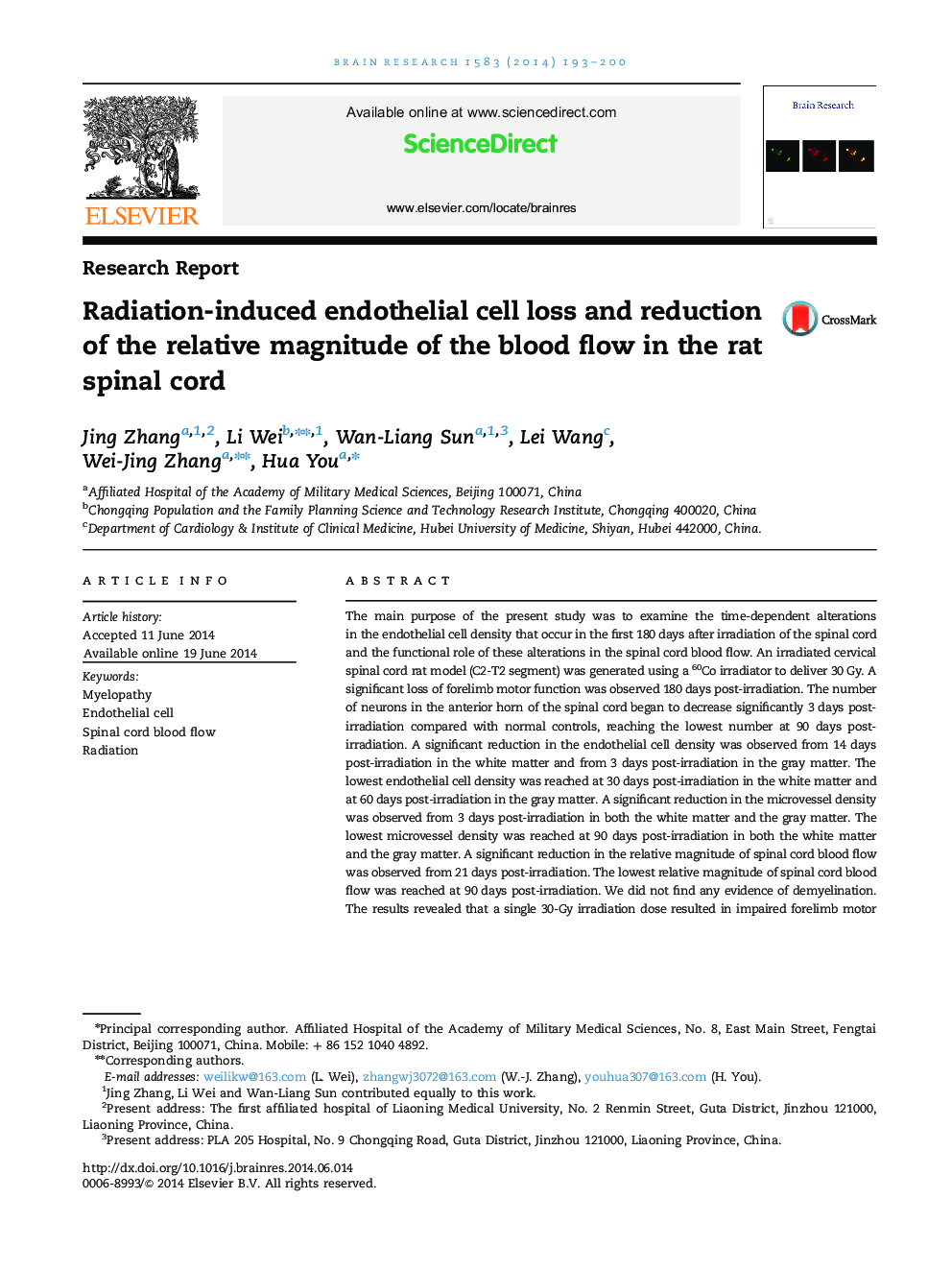| کد مقاله | کد نشریه | سال انتشار | مقاله انگلیسی | نسخه تمام متن |
|---|---|---|---|---|
| 4324154 | 1613856 | 2014 | 8 صفحه PDF | دانلود رایگان |
• We examined the time-dependent alterations in the endothelial cell density.
• We examined the functional role of these alterations in the spinal cord blood flow.
• The lowest spinal cord blood flow was reached at 90 days post-irradiation.
• 30-Gy irradiation was not sufficient to induce demyelination in the rat spinal cord.
The main purpose of the present study was to examine the time-dependent alterations in the endothelial cell density that occur in the first 180 days after irradiation of the spinal cord and the functional role of these alterations in the spinal cord blood flow. An irradiated cervical spinal cord rat model (C2-T2 segment) was generated using a 60Co irradiator to deliver 30 Gy. A significant loss of forelimb motor function was observed 180 days post-irradiation. The number of neurons in the anterior horn of the spinal cord began to decrease significantly 3 days post-irradiation compared with normal controls, reaching the lowest number at 90 days post-irradiation. A significant reduction in the endothelial cell density was observed from 14 days post-irradiation in the white matter and from 3 days post-irradiation in the gray matter. The lowest endothelial cell density was reached at 30 days post-irradiation in the white matter and at 60 days post-irradiation in the gray matter. A significant reduction in the microvessel density was observed from 3 days post-irradiation in both the white matter and the gray matter. The lowest microvessel density was reached at 90 days post-irradiation in both the white matter and the gray matter. A significant reduction in the relative magnitude of spinal cord blood flow was observed from 21 days post-irradiation. The lowest relative magnitude of spinal cord blood flow was reached at 90 days post-irradiation. We did not find any evidence of demyelination. The results revealed that a single 30-Gy irradiation dose resulted in impaired forelimb motor function, a decreased number of neurons, and reduced endothelial cell density, microvessel density and relative magnitude of spinal cord blood flow. However, a 30-Gy single-dose irradiation was not sufficient to induce demyelination in the rat spinal cord.
Journal: Brain Research - Volume 1583, 2 October 2014, Pages 193–200
